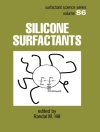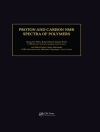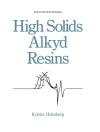Lightness, efficiency, durability and economic as well as ecological viability are key attributes required from materials today. In the transport industry, the performance needs are felt exceptionally strongly. This handbook and ready reference covers the use of structural materials throughout this industry, particularly for the road, air and rail sectors. A strong focus is placed on the latest developments in materials engineering. The authors present new insights and trends, providing firsthand information from the perspective of universities, Fraunhofer and independent research institutes, aerospace and automotive companies and suppliers.
Arranged into parts to aid the readers in finding the information relevant to their needs:
* Metals
* Polymers
* Composites
* Cellular Materials
* Modeling and Simulation
* Higher Level Trends
İçerik tablosu
PREFACE
PART I: Metals
STEEL AND IRON BASED ALLOYS
Introduction
Sheet Steels
Forging Steels
Casting Steel
ALUMINUM AND ALUMINUM ALLOYS
Introduction
Wrought Alloys and Associated Processes
Casting Alloys and Associated Processes
Secondary Processes
Case Studies
Summary and Outlook
Further Reading
MAGNESIUM AND MAGNESIUM ALLOYS
Introduction
Wrought Alloys and Associated Processes
Cast Alloys and Associated Processes
Other Aspects
Case Studies
Summary and Outlook
Further Reading
TITANIUM AND TITANIUM ALLOYS
Introduction
Fundamental Aspects
Applications in Automobiles, Aerospace, and Ship Building
Future Trends
Further Reading
PART II: Polymers
THERMOPLASTICS
Introduction
Fundamentals and Recent Advancements in Thermoplastics
Processing and Evolution of Structure?Basics and Recent Developments
Properties
Summary
THERMOSETS
Introduction
Advanced Thermosets and Associated Processes
Thermosets for Coatings and Adhesives
Case Studies?Thermoset Composites
Summary and Outlook
ELASTOMERS
Introduction
Classification of Elastomers
Natural Rubber
Synthetic Rubbers
Thermoplastic Elastomers
Fluorine-Containing TPEs
Bio-Based TPEs
Conclusions
PART III: Composites
POLYMER MATRIX COMPOSITES
Introduction
Further Reading
METAL MATRIX COMPOSITES
Introduction
Relevant MMC Systems
Case Studies
Summary and Outlook
Further Reading
POLYMER NANOCOMPOSITES
Introduction
Fiber-Reinforced Nanocomposites
Sandwich Structures
High-Temperature Fiber-Reinforced Nanocomposites
Age and Durability Performance
Concluding Remarks
PART IV: Cellular Materials
POLYMERIC FOAMS
Introduction
Blowing Agents for Polymer Foams
Thermoplastic Foams: Conventional Processing Technologies
Thermoplastic Foams: New Trends, Materials and Technologies
Thermosets Foams: Conventional Processing Technologies
Thermosets Foams: New Trends, Materials and Technologies
Nanocomposite Foams
Case Studies
Summary and Outlook
Further Reading
METAL FOAMS
Introduction
Foams Produced by Means of Melt Technologies
Foams Produced by Means of Powder Metallurgy (P/M)
Porous Structures for Structural Applications Produced from Wires and Other Half-Finished Parts
Case Studies
Summary and Outlook
Further Reading
PART V: Modeling and Simulation
ADVANCED SIMULATION AND OPTIMIZATION TECHNIQUES FOR COMPOSITES
Introduction
Multiphysics Homogenization Analysis
Probabilistic Homogenization Approaches
Optimization
Summary and Conclusions
AN ARTIFICIAL-INTELLIGENCE-BASED APPROACH FOR GENERALIZED MATERIAL MODELING
Introduction
Strain Measures
Stress Measures
Example
AB INITIO GUIDED DESIGN OF MATERIALS
Introduction
Top-Down and Bottom-Up Multiscale Modeling Strategies
Ab Initio Based Multiscale Modeling of Materials
Modeling of Ultralightweight Mg?Li Alloys
Ternary bcc Mg Li?X Alloys
Summary and Outlook
Further Reading
PART VI: Higher Level Trends
HYBRID DESIGN APPROACHES
Introduction
Motivation
From Monomaterial to Hybrid Multi-Material Design Approach in the Automotive Sector
ULSAB AVC Project/FSV Future Steel Vehicle Project
S-in Motion ? Steel Bi W Project
Multi-Material Hybrid Design Approach
Optimum Multi-Material Solutions: The Reason for Hybrid Design Approach
Super LIGHT-Car Project
Hybrid Solutions: Overview of Current Automotive Production
Trends in Automotive Materials and Structural Design
Hybrid Solutions in Aircraft, Rail, and Ship Market
General Aspects on Joining Technologies for Multi-Material Mix
Conclusion
SENSORIAL MATERIALS
Introduction
Components
Case Study
Further Reading
ADDITIVE MANUFACTURING APPROACHES
Introduction
Metal Materials
Nonmetal Materials
Secondary Processes
Case Studies
Summary and Outlook
Further Reading
INDEX
Yazar hakkında
Matthias Busse holds the chair for near net shape manufacturing technologies at the University of Bremen, Germany. Following his
Ph D he started his career at Volkswagen where he was promoted to head of production research in 2001. In 2003 he became director
of the Fraunhofer Institute for Manufacturing Technology and Advanced Materials (Fraunhofer IFAM), where he introduced electro mobility as a major new field of research, ranging from elements of the power train like energy storage, electrical systems or wheel hub motors to vehicle concepts and test fleet management and service data evaluation. He represents the University of Bremen’s newly founded Scientific
Centre ISIS as speaker of the board of directors.
Kambiz Kayvantash created the Chair for Automotive Technology at Cranfield University, UK, and until 2010 was the Director of the
Cranfield Impact Centre which has a long track record of contributions to the aeronautic and motor sport industry. He is Associated
Professor at Centre for Automotive Technology and Director of CADLM, Sarl, a French SME specialized in optimization and robustness of highly non-linear mechanical problems. He has more than 28 years of academic, professional and consulting experience in automotive safety, materials modeling and software development for industrial applications. Kambiz Kayvantash is the Chairman of the Simbio-M conference, dedicated to biomechanics, biomaterial, biomedicine and biomolecular research.
Axel S. Herrmann has taken over the post of director at the Faserinstitut Bremen (FIBRE) e.V. in 2001. After his Ph D he became head of the composite structures demonstration centre at DFVLR (now DLR) and was responsible for the affiliated department of fibre-reinforced
composite technologies until he moved to Bremen. Axel S. Hermann has taken a leading role in establishing the CFK Valley Network of Excellence in Stade, Germany. In addition he is general manager of the Composite Technology Centre (CTC) Gmb H Stade.
Dirk Lehmhus joined Fraunhofer IFAM in 1998 and obtained a Ph D in production technology at the University of Bremen for studies
on optimization of aluminium foam processing and properties. Until 2009, he acted as project manager for Fraunhofer IFAM in several national and European projects with a focus on lightweight materials for automotive applications. In May 2009, he changed to the University of Bremen as managing director of the ISIS Sensorial Materials Scientific Centre dedicated to the development of sensor-equipped intelligent structures
and sensorial materials. Within the framework of the Euromat Conference series, he has since 2009 been responsible for the topic of Transportation & Mobility.












